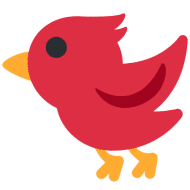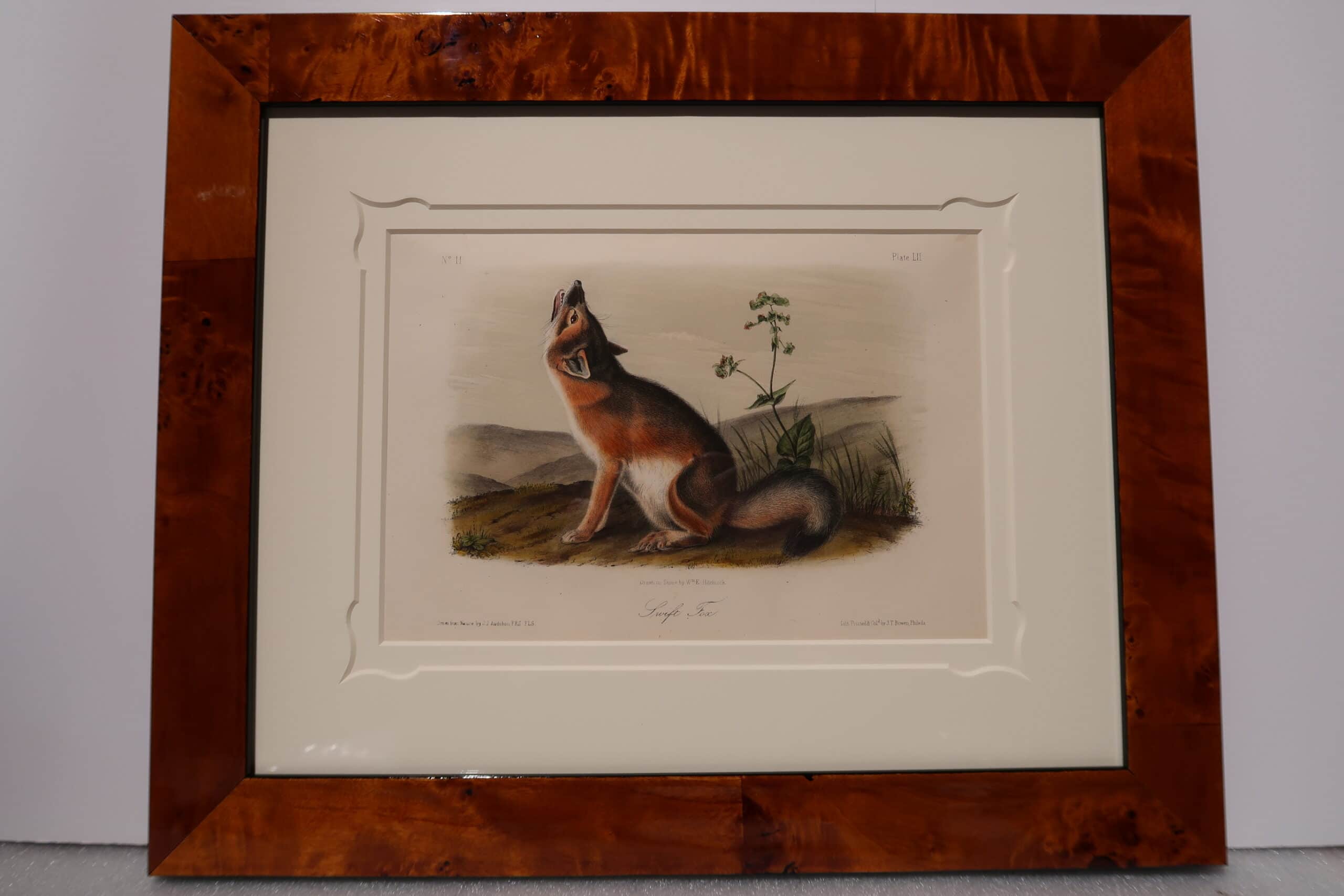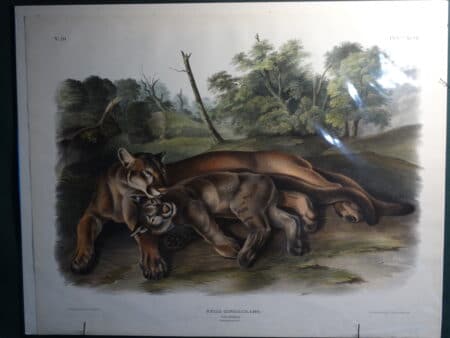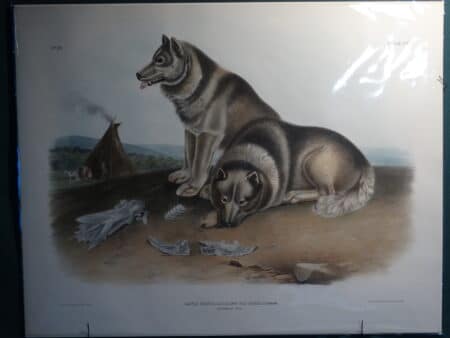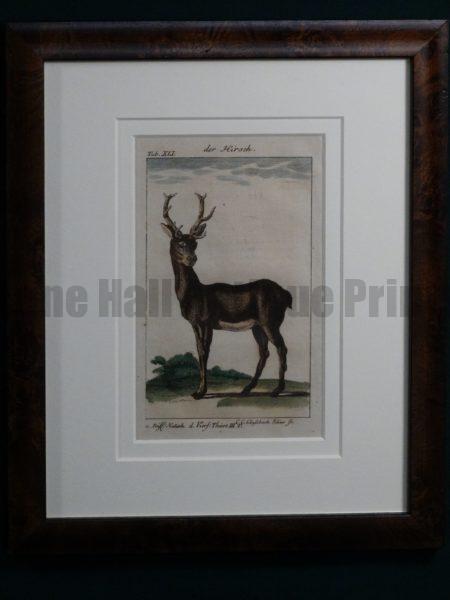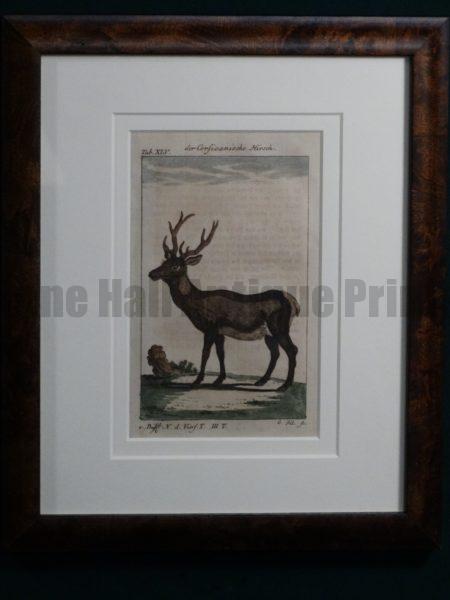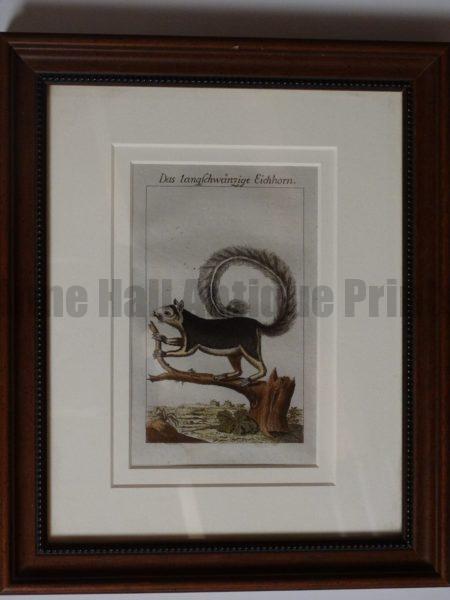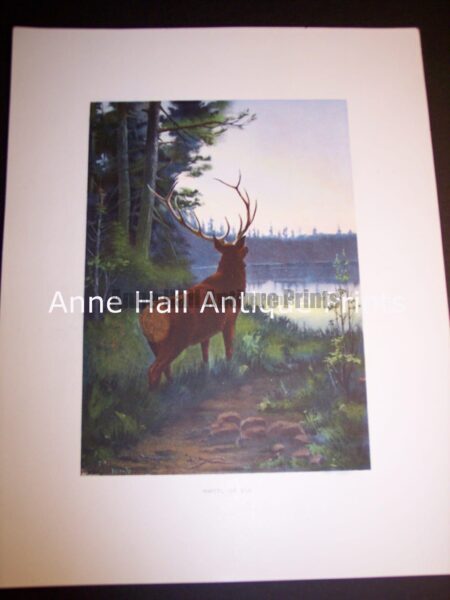Woodland Animals, or American Wildlife Mammals: Antique lithographs & engravings, over 100 years old. Many hand-colored. Subjects include: Bears, Beavers, Cougars, Deer, Foxes, Raccoons, Wolves & Squirrels. Featuring the art & work, of John James Audubon, and Compte de Buffon.

Our antique prints, of American species of woodland animals, are antiques. This means they are over 100 years old. Consider our collections, of wildlife mammals, published by famous naturalists, including Audubon & Buffon, when looking for great art for your walls.
Pair of J.J. Audubon Foxes. Original plates of woodland animals, from 1849-1855, with exquisite framing.
A beautiful J.J. Audubon, woodland animal called the American black fox, or silver fox. A stunning red fox, or Swift Fox, by John James Audubon. This antique hand-colored lithograph, printed in Philadelphia, from 1849-1855. Each antique lithograph is framed, with a exquisite museum matting, UV glass, in a low profile, modern gloss burlwood frames. Each piece measures 15″ height and 18″ wide. Sold individually at $650. each. Call Anne at 413-245-4197 to place your order.
The illustrations of JJ Audubon’s Mammals, or his Quadrupeds of North America, are important as they documented, the animal life in North America in the early 1800’s. How were they published? The illustrations were transferred onto a specially crafted flat piece of limestone. What would be in relief, was drawn onto the crafted slab of limestone. With, kind of a greasy crayon. Once finished with meticulous detail, the plate was ready for the next step.
Next the limestone plate was emerged into nitric acid! The nitric acid burned away the parts of the limestone, not protected by the greasy crayon. The plate was cleaned off, inked up and printed in black ink. The porosity of the limestone had to have a just the right consistency and posits for printing purposes. The coloration was added professionally by hand at the time of production, back (and in the case of these wildlife mammals) in 1849-1855.
It took tremendous skill to be a lithographer in the 1800’s. One would serve an apprenticeship for years before becoming one. If you were not good, you would never work for a major firm. Your job, depended on your skill.
Woodland Animals by J.J. Audubon, American Hand-Colored Lithographs, from 1849-1855.
Each of the wildlife mammals measures 7 x 10 1/2″. Additional information about these antique lithographs in the paragraph above. Call Anne with your specific Audubon requests at 413-245-4197.
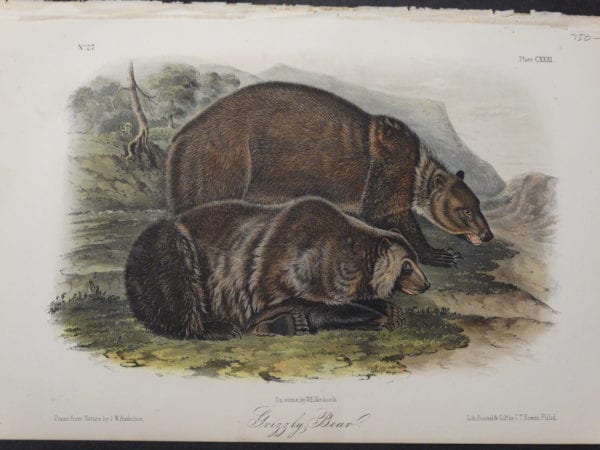
Woodland Audubon Grizzly Bear $750. 
Audubon Rocky Mountain Sheep $275. 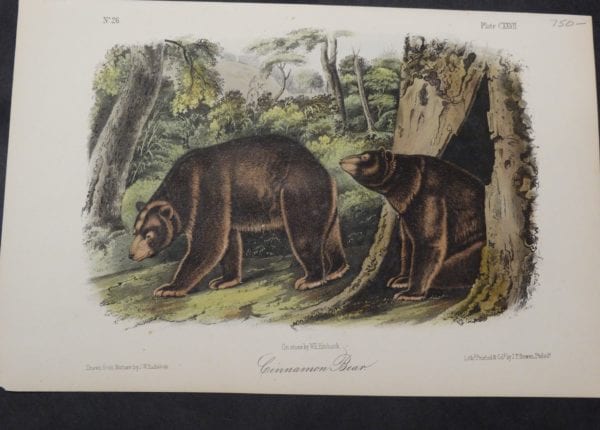
Audubon Cinnamon Bear $750. 
JJ Audubon, White American Wolf $300. 
Woodland Audubon Prong Horned Antelope $200. 
Audubon Black American Wolf $350. 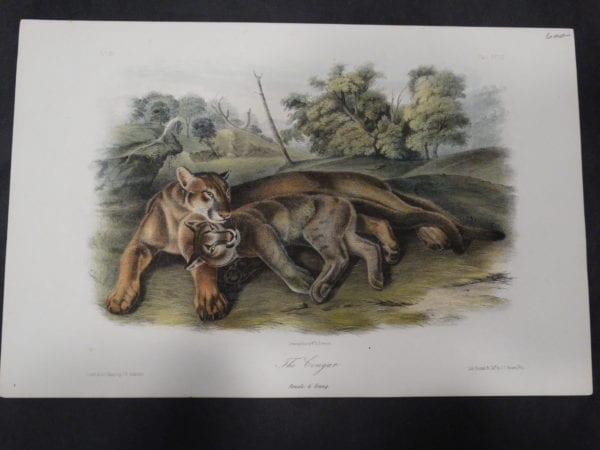
Woodland Audubon The Cougar $600. 
Audubon Canada Otter $250. 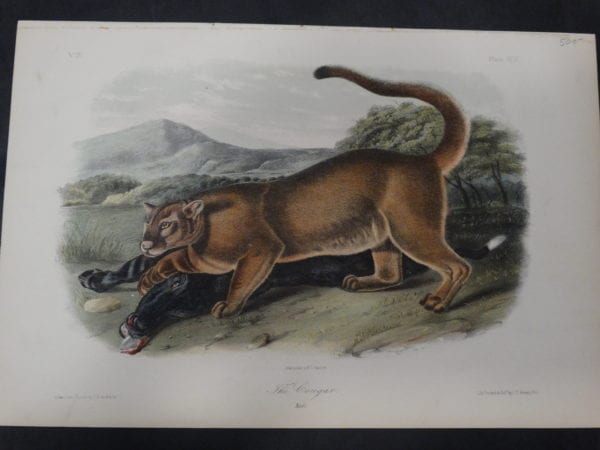
Woodland Animal, Audubon, Cougar Male $300. 
Audubon Crab-eating Raccoon $325. 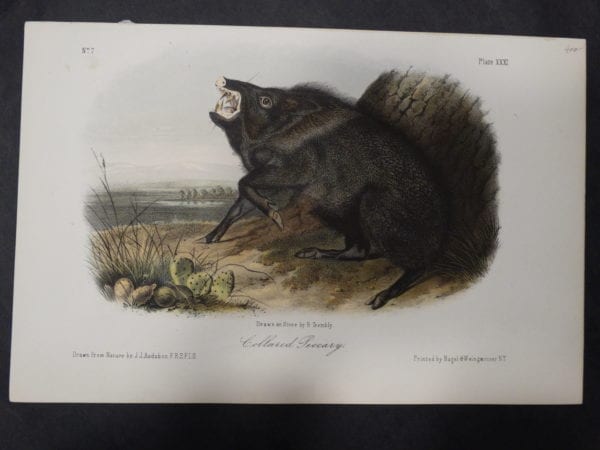
Woodland Audubon Collared Peccary $400. 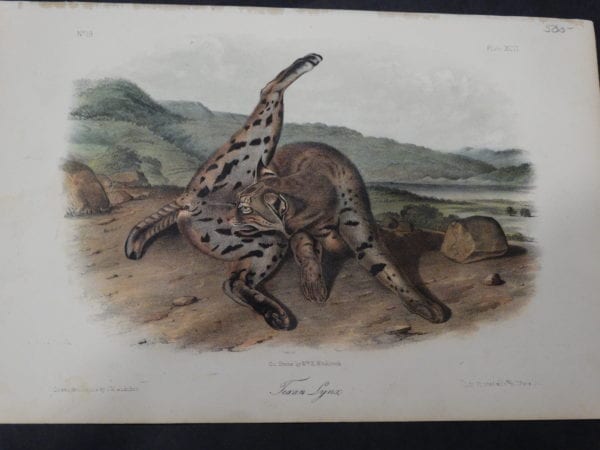
Woodland Audubon Texan Lynx $500. 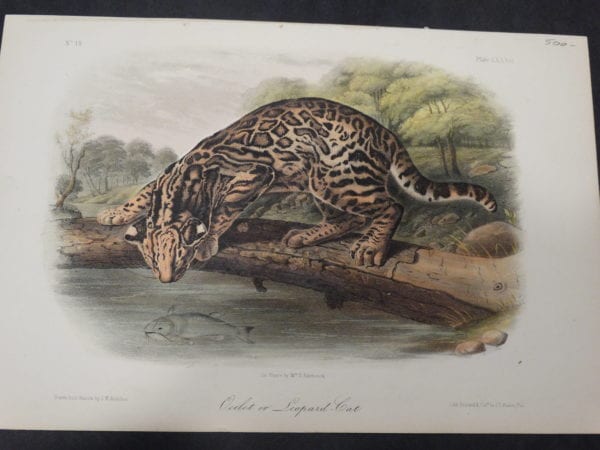
Woodland Audubon Ocelot $500. 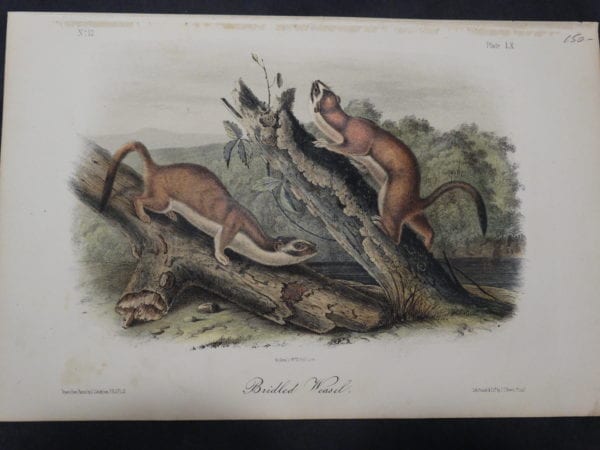
Audubon Bridled Weasel $150. 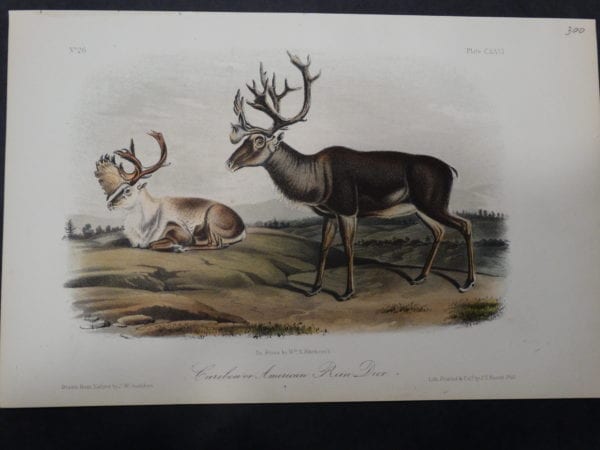
Woodland Audubon Caribou $300. 
Audubon Pennant’s Marten or Fisher $350. 
Audubon American Red Fox $250. 
Audubon Virginia Opossum $350.
Imperial Folio John James Audubons, “The Viviparous Quadrupeds of North America”
Available, imperial folio original 19th Century bookplates, by John James Audubon: Grizzly Bear, Cougar, Indian Dogs. All piece are sourced from “The Viviparous Quadrupeds of North America,” which published 1849-1854. These watercolor lithographs, are antiques, and about 150 years old. Published by J.T. Bowen Philadelphia. John James passed in 1851. Towards the end of the series, plates were credited to his son, John Woodhouse Audubon. John Woodhouse, completed the most famous art work, on American species of wildlife animals. Each piece is in excellent condition, and measures 22 x 28″ Call Anne at 413-245-4197 or email your inquiry: oldprint@verizon.net.
Set of 3 Framed, Antique Deer Engravings, by George Leclerc Compte de Buffon.
Woodland animals of deer source from a rare edition of Buffon’s work, published in Germany from 1790-1805. These are 220 year old, hand-colored (copper plate) engravings, on hand made laid rag. The wildlife mammals are double matted in rag and under UV glass in a solid wood molding with fruitwood burl. Each framed piece measures 9 1/2″ x 11 1/2″. The set of 3 pieces are $600. Free shipping, in America. Click here to contact us.
George Leclerc Compte de Buffon, set of 3 framed engravings, of squirrels.
These charming squirrels are woodland animals. They are sourced from a rare edition, of Compte de Buffon’s work, which published Germany from 1790-1805. They are hand-colored, copper plate, engravings, on laid rag paper. Double matted in rag, and framed under UV glass, in a solid wood molding with fruitwood burl. $650. for the trio, shipped in America. Each piece measures 9 1/2″ x 11 1/2″. Click here to contact us.
18th Century Engravings, of Woodland Animals, by Compte de Buffon
This grouping of wildlife mammals, published from 1749-1761. These are Buffon animal engravings, animals you may see in the woods. Every one, of these woodland animals, has explicit character & expression, conveyed by the art. The hand-colored (copper plate) engravings, were pressed during the mid 1700’s, onto a piece of “paper,” made from hand-made laid rag. Slight toning to the paper, the plates are priced accordingly. Measurements 7 1/2 x 9 1/2″. Click here to contact us.

Animal Buffon Armadillo 483 $125. 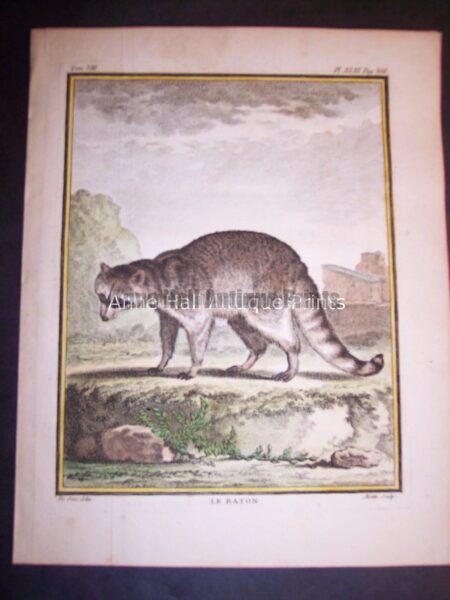
Animal Buffon Racoon 478 $125. 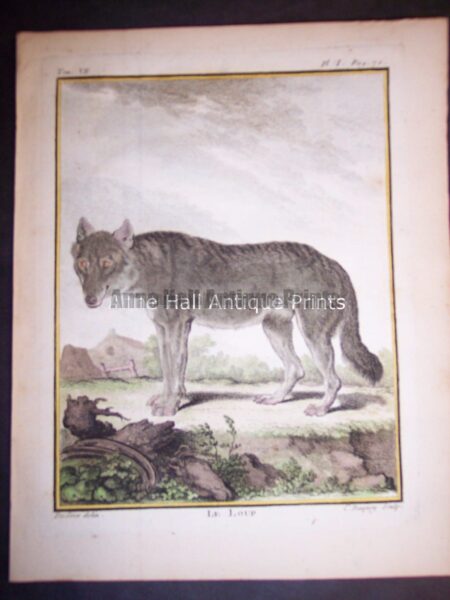
Animal Buffon Wolf #469 $125. 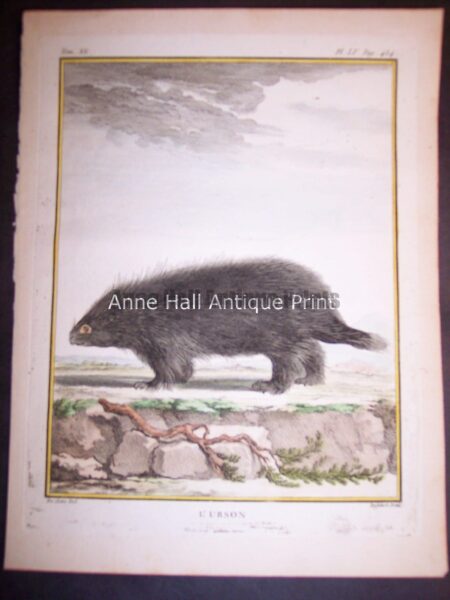
Animal Buffon Urson 479 $75. 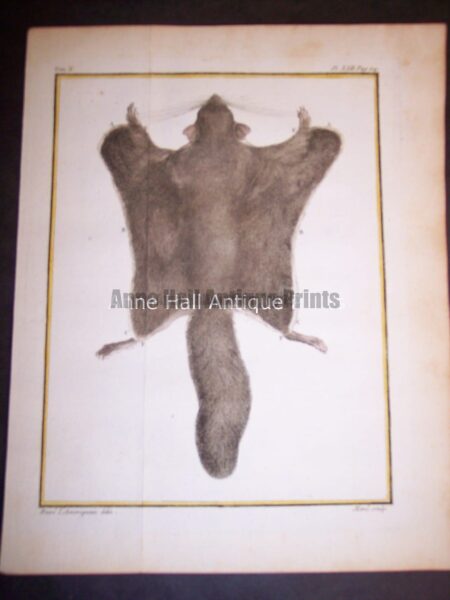
Animal Buffon Squirrel 471 $85. 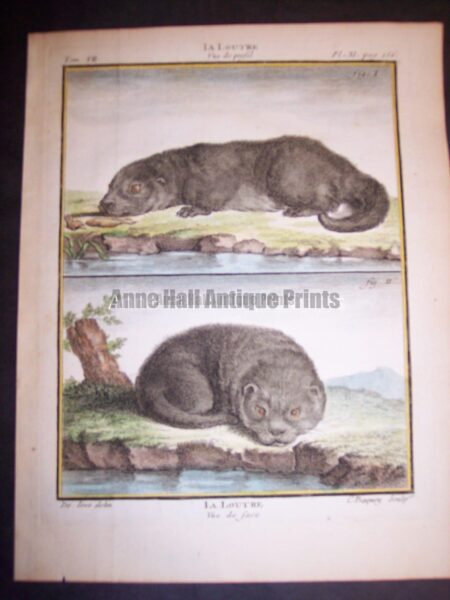
Animal Buffon Otter 465 $125. 
Animal Buffon Flying Squirrel 470 $95. 
Animal Buffon Elan 485 $95. 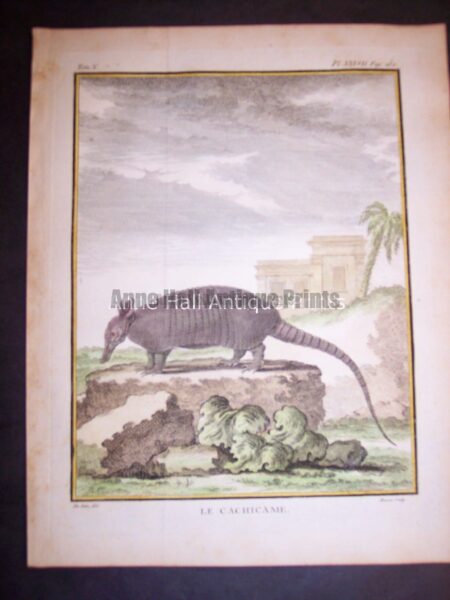
Animal Buffon Armadillo 482 $125. 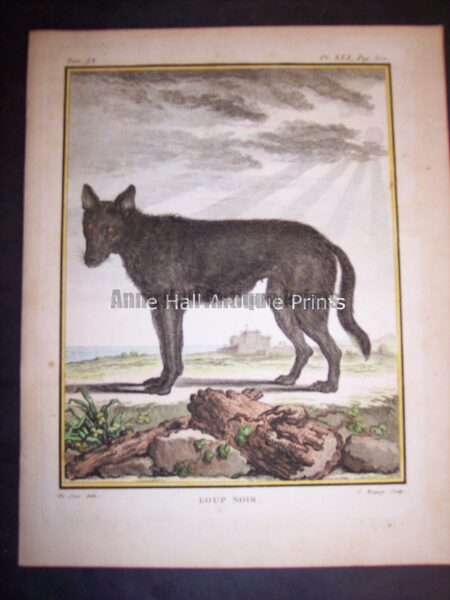
Animal Buffon Wolf 467 $125. 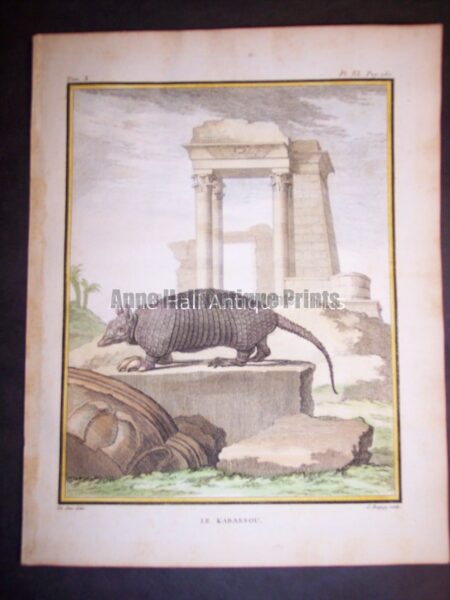
Animal Buffon Armadillo 484 $125. 
Animal Buffon Cougar 464 $200. 
Animal Buffon Squirrel 474 sold. 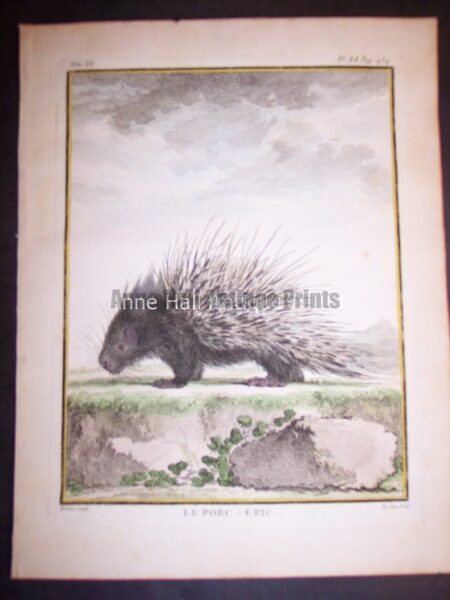
Animal Buffon Porcupine 481 sold. 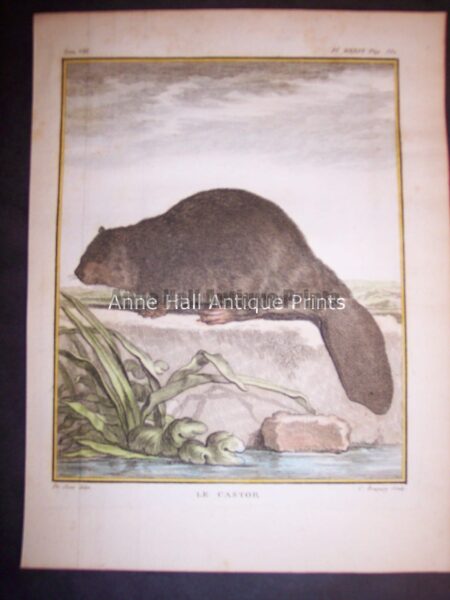
Animal Buffon Beaver 476 sold. 
Animal Buffon Porcupine 477 sold. 
Animal Buffon Bear 468 Sold, inquire to wait list one. 
Animal Buffon Squirrel 473 sold 
Animal Buffon Badger 480 sold. 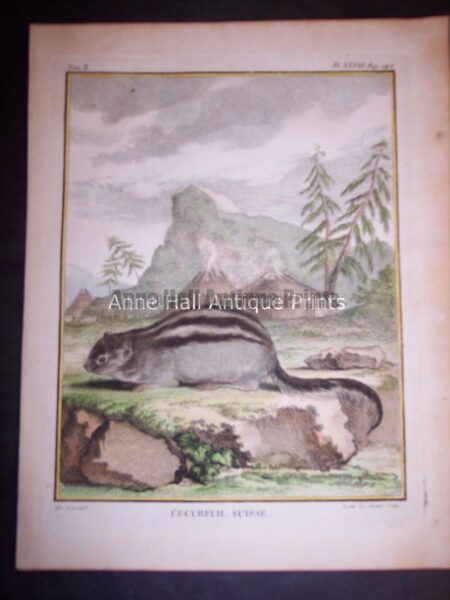
Animal Buffon Chipmonk 472 sold.
Wildlife Mammals-Woodland Animals Published in New York 1900.
c.1900 Published by the Fish and Game Commission of the State of New York. Photolithographs. Each in lovely bold colors, paper measures about 9 x 11″. Priced $75. each or the three for $150 shipped in the U.S.. Click here to contact us.
John James Audubon Squirrels. Octavo Quadrupeds of North America $125. each.
Audubon Squirrel Prints from the First Royal Octavo of John James Audubon’s work entitled “The Viviparous Quadrupeds Of North America.” Published in Philadelphia, 1844. Beautifully illustrated hand colored lithographs. Audubon woodland mammals, here are squirrels. Antique lithographs with watercolors. Each antique bookplate measures 7 x 10 1/2″. Click here to contact us.
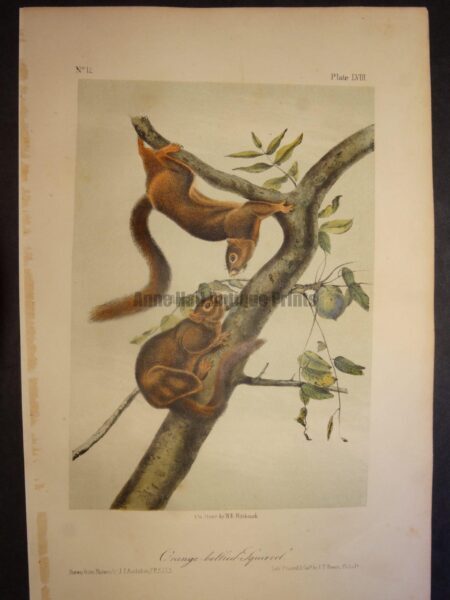
Audubon Orange Bellied Squirrel $125. 
Audubon Richardsons Columbian Squirrel by JJ Audubon. $125. 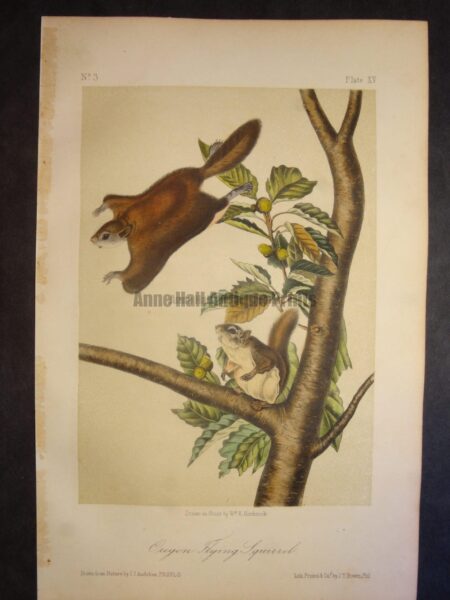
Audubon Oregon Flying Squirrel $125. 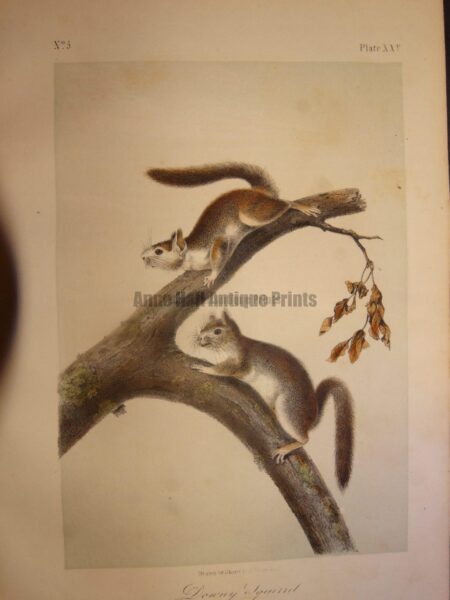
Audubon Downy Squirrel $125. 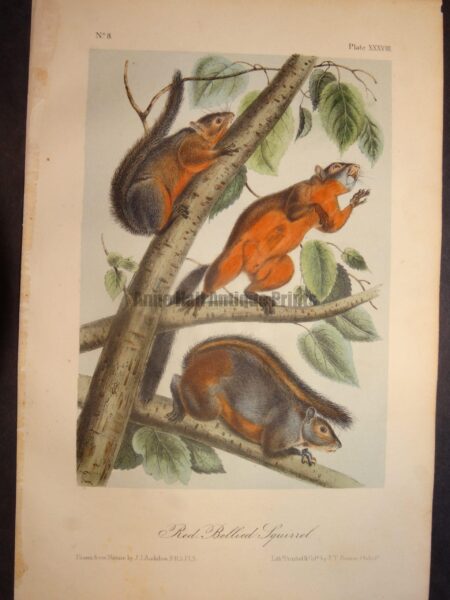
Audubon Red Bellied Squirrel by JJ Audubon 1844, Philadelphia. Plate XXXVIII $125. 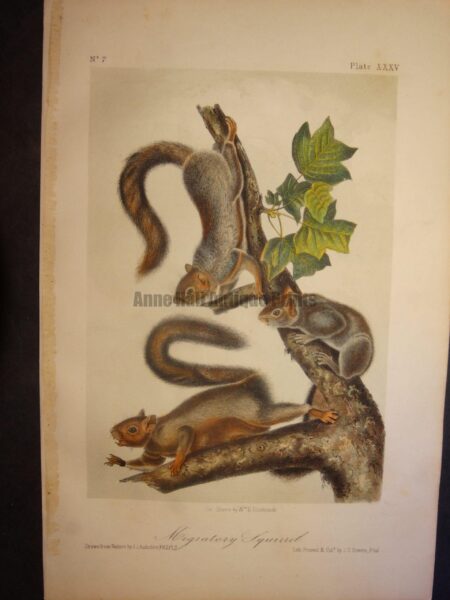
Audubon Migratory Squirrel $125. 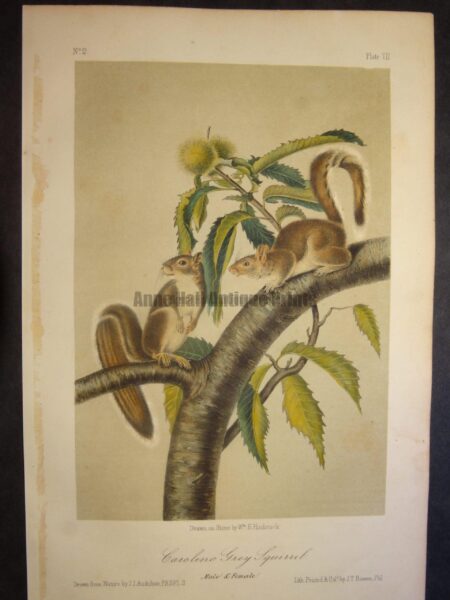
Audubon Carolina Grey Squirrel $125. 
Audubon Dusky Squirrel $125. 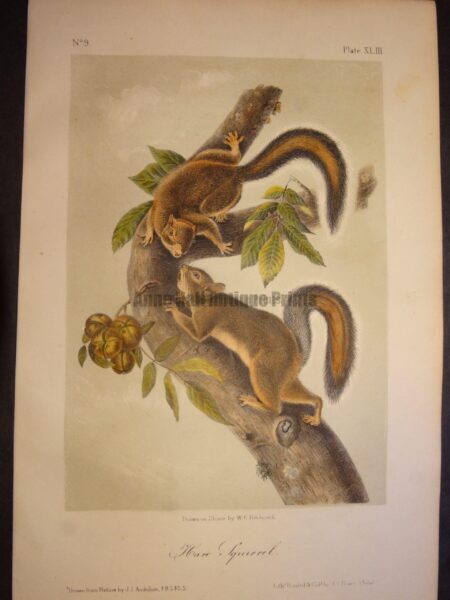
Audubon Hare Squirrel $125. 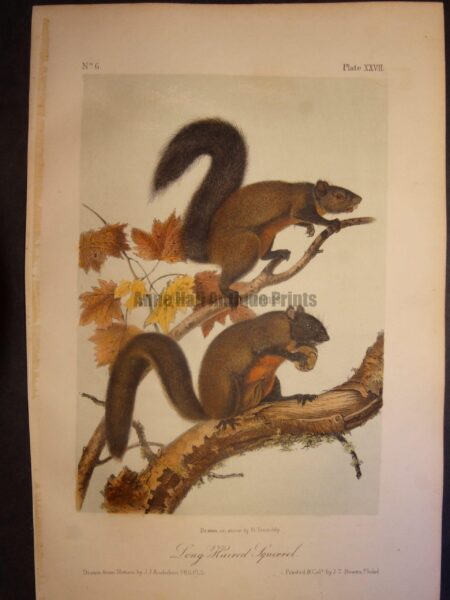
Audubon Long Haired Squirrel $125. 
Audubon Red Tailed Squirrel $125. 
Audubon Cat Squirrel $125. 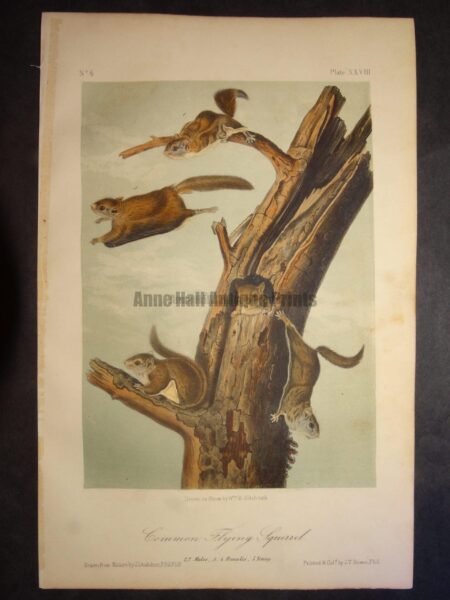
Audubon Common Flying Squirrel $125. 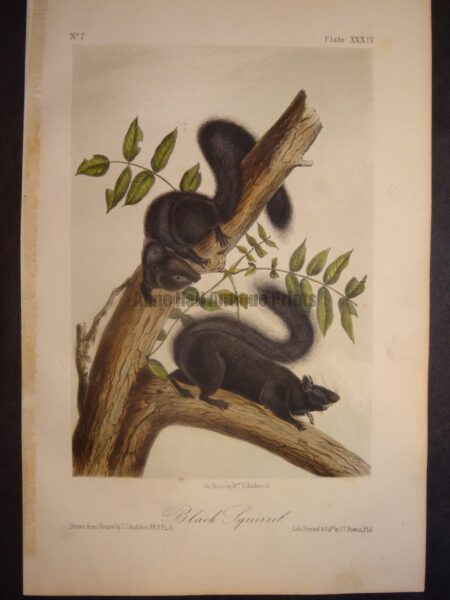
Audubon Black Squirrel, by JJ Audubon. Published in Philadelphia 1844. Hand colored lithograph. John James Quadrupeds or Animals of North America Call for availabilty. 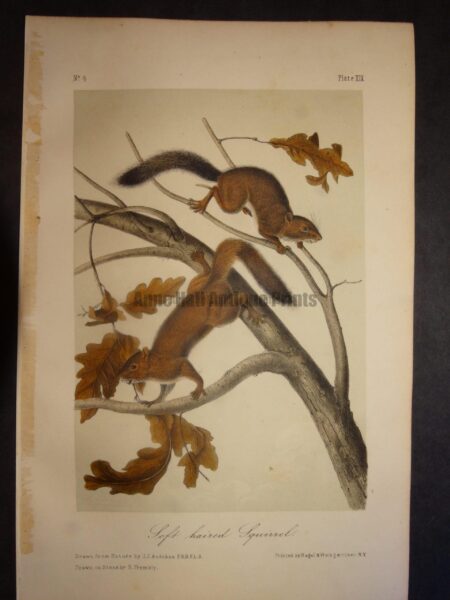
Audubon Soft Haired Squirrel $125.
Background on John James Audubon, and his art on my website:
These antique Audubon lithographs are the work of John James Audubon. They are all over 100 years old. Own a part of American History by owning an original hand colored lithograph from the original Audubon books. Coming from the First Royal Octavo Edition published by John James Audubon in Philadelphia, Pennsylvania in the year of 1844. They were drawn from nature by John Woodhouse Audubon. Drawn on stone called a lithograph by William E. Hitchcock. Lithographed, printed and colored provided by the publisher, J.T. Bowen, in Philadelphia, Pennsylvania in 1844. The Quadrupeds of North America, which encompassed a total of 150 native American four legged, or “quadruped” mammals, each individually documented and portrayed in their land natural settings by John Woodhouse, John James’s son.
This was a collaborative work between the very famous 19th Century American painters: John James Audubon and his two sons: John Woodhouse Audubon; and Victor Gifford Audubon; and the naturalist Reverend John Bachman. They documented and portrayed what J.J. Audubon considered a dwindling resource: the native mammals set among the splendor and majesty of the uninhabited America landscape. The team traveled westward from Audubon’s home in Mill Grove, Pennsylvania up the Missouri River and through territory just previously explored by Lewis and Clark. From the Canadian border of the Northern Russian Territories, now Alaska, southward to Mexico. This monumental journey was extremely hard on the wildlife team, and therefore influenced the compositions of their artwork and paintings, to some degree. Despite tumultuous weather, these old lithographs are a pertinent record of North American animals.
The Quadrupeds of North American is a wildlife essay which provides a classic contribution to both American History and the artwork that documented it during the early to mid 19th Century. The American Review, a Whig journal, heralded the national origin of the Quadrupeds: “We have at last have a Great National Work, originated and completed among us- authors, artists and artisans of which are our own citizens. the Bible of Nature!” Most of this information was sourced from the book entitled: John James Audubon in the West. Published 2000 in New York, by Henry H. Abrams.
Audubon Mice, Set of three framed pieces sold.
Audubon’s best animals illustrated with food. Published during 1854 to 1855. Coming from the work is entitled Vipaparous Quadrupeds of North America. These old prints of mammals are water colored lithographs that were completely produced from 1854-1855. They are 1st edition octavo edition mammals. Shipped in the U.S., they are framed right to conserve them in high end stunning, gold leafed frames over red paint. Each framed Audubon measures about 17″ wide by 13″ high. An exemplary, outstanding trio of the Author’s work. Click here to contact us.

Brown Norway Rat with Melons sold 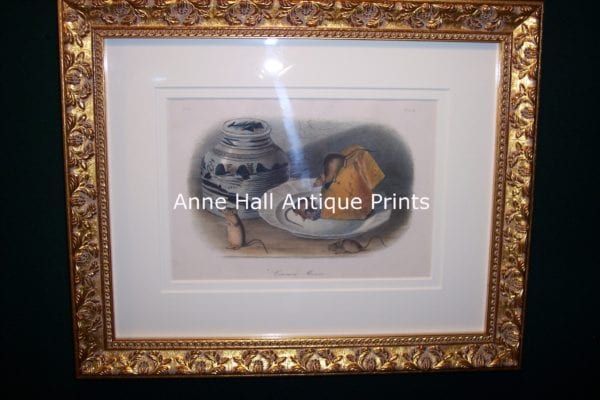
Audubon Common Mouse sold 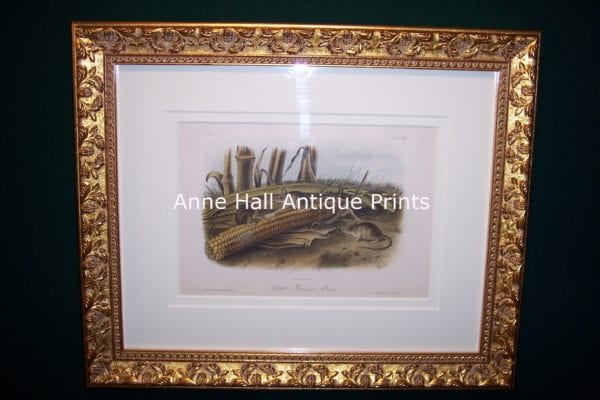
Little Harvest Mouse sold
Additional information on 18th & 19th century printing methods.
Copper-plate engravings are old antique prints. It was an antique printing method, like photographs in the old days, so that people could see images of what these studies were about. In copper plate engraving, a very thin piece of copper was attached to a block of wood. Tools called burins were used to engrave into the copper. While the paper was slightly damp, the copper plate was carefully inked up and printed onto the piece of hand made rag paper, actually engraving the paper. Water colors could be added by hand, using the finest natural products obtained from everywhere on the Earth.
Lithography is an antique printing method. It came after copper plate engraving. Generally a lithograph was printed in one color, black. A type of greasy crayon was used to draw onto a special type of limestone, with just the right porosity. After the image was completed, the limestone was emerged into nitric acid, burning away what was not under the greasy crayon, leaving that portion in relief. It was inked up and printed. The image frequently was illuminated with water colors.
Chromolithography is an antique printing method whereas each color was printed from individual key stoned limestone plates. An extended version of lithography, quite laborious requiring a very skilled craftsman to get the registration just right and not distorted, or render the image out of registration. The process virtually replaced the laborious and expense of hand water coloring. Eventually, c.1900 photographic off set printing replaced any and all antique printing methods, pretty much forever.
Thanks for visiting my website, on woodland animals.
I hope you have enjoyed my collections of natural history engravings and lithographs. This page is dedicated to American species of woodland animals. Or, wildlife mammals, you may see in American woods. Want some more ideas? See Ferns! See Trout!
I love watching for wildlife in my own yard. See my videos on woodland animals on my woodlot, see my backyard safari, on Utube. I hope you have enjoyed my website! Thank you for visiting Anne Hall Antique Prints. Phone Anne: 413-245-4197 or email: anne@annehallantiqueprints.com.
